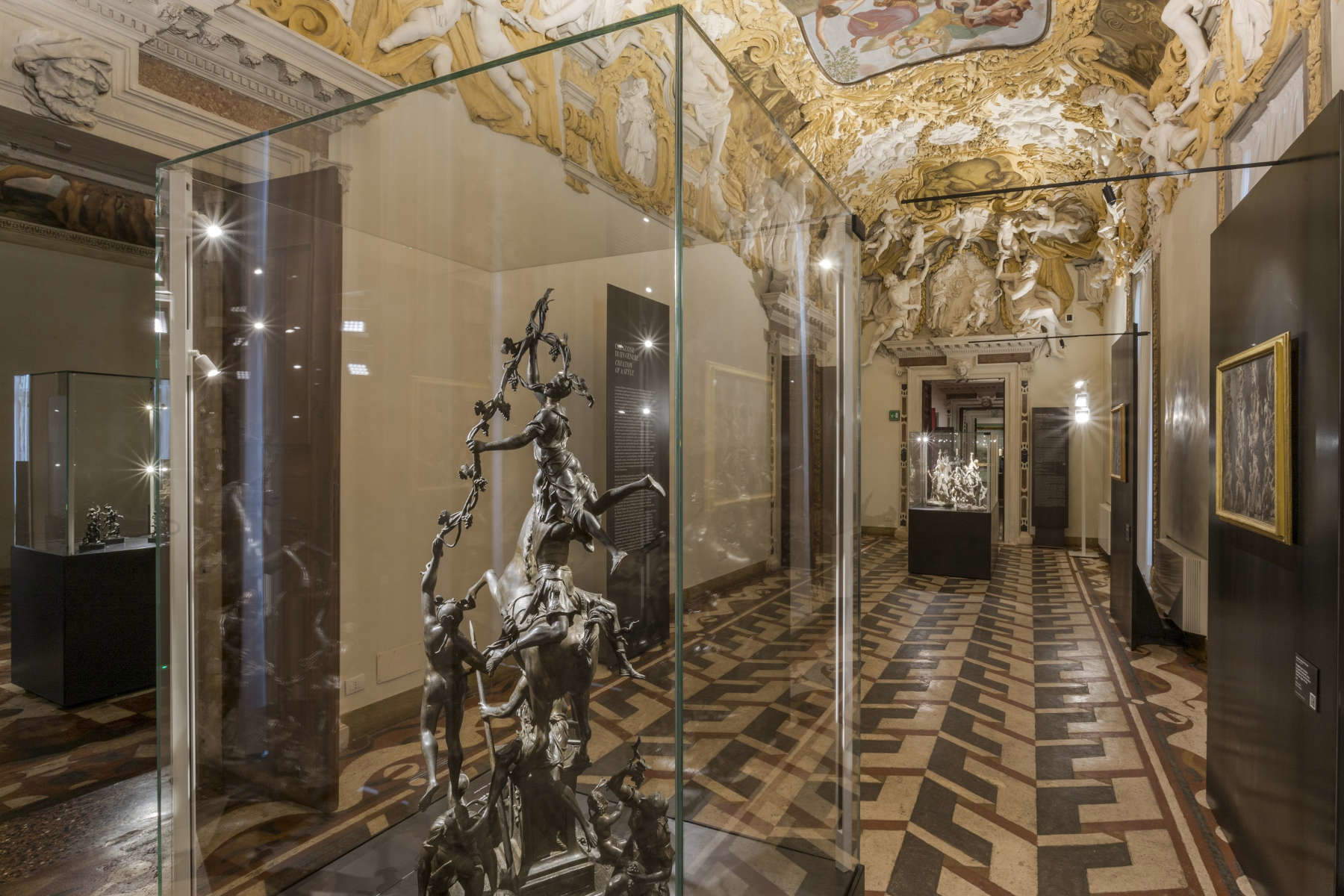Vicenza hosts first-ever exhibition on Francesco Bertos, spectacular 18th-century sculptor
In Vicenza, on the 25th anniversary of Gallerie d’Italia di Vicenza, the first museum of Banca Intesa Sanpaolo, the exhibition La caduta degli angeli ribelli opens to the public from October 11, 2024 to February 9, 2025. Francesco Bertos, curated by Monica De Vincenti and Fernando Mazzocca. This is the first exhibition dedicated to Francesco Bertos (Dolo, 1678 - 1741), one of the most singular, sought-after and celebrated artists in the Republic of Venice in the first half of the 18th century. On display are more than 40 works from major national and international museums such as Palazzo Madama and Palazzo Reale in Turin, Ca’ Rezzonico and Museo Correr in Venice, Museo Arqueologico Nacional in Madrid, Musée national des châteaux de Versailles et de Trianon in Versailles as well as private collections and the Intesa Sanpaolo collection. The exhibition itinerary also includes works that have never been exhibited from the deposits of the Soprintendenza Archeologia Belle arti e Paesaggio for the Metropolitan City of Milan.
Francesco Bertos’ fame derives mainly from the extraordinary groups with bizarre and complex allegorical subjects, executed in bronze and marble for the most important collectors of his time. Striking is the extreme technical virtuosity of these dynamic compositions characterized by small figures refined in detail, intertwined in acrobatic contortions to form flying pairs or populous pyramidal structures, so astonishing that they merited the scrutiny of the Inquisition “seeming impossible that the human hand should arrive at so much” (so in the General Inventory of the Gallery of H.E. Marshal Co: of Schulenburg, June 30, 1741).
With such compositions Bertos gave birth to a new genre of gallery sculpture, which satisfied the most sophisticated collectors of the time fascinated by the variety and refined technique, which succeeded in overcoming the limitations imposed by marble and bronze by coming to match the illusionistic effects of contemporary painting.
The central work of the exhibition is Bertos’s masterpiece: the Fall of the Rebel Angels, a spectacular marble sculpture recently attributed to the author, belonging to the Intesa Sanpaolo collection and exhibited at the Gallerie d’Italia in Vicenza in a dedicated room conceived by lighting designer Pietro Palladino, who with an original and sophisticated lighting system enhances the sculptor’s technical and artistic talent while amplifying the narrative. In a side-by-side space, the visitor is led to discover the work with tactile reproductions (designed for people with visual impairments), an exciting immersive video, an interview with art historian Monica De Vincenti (also in LIS language), and the visual narrative of the 3D transposition of the sculpture, so as to ensure the enjoyment of the work for all audiences.
Carved from a single block of Carrara marble and composed of about sixty figures perfectly finished in every detail, the work depicts the heavenly combat between the army of good and the army of evil, commanded one by the archangel Michael and the other by Satan, as recounted in the Apocalypse of John. The work was originally intended to decorate the gallery of the Paduan palace of the Trento nobles, but the sculpture’s fame increased when in the 19th century it passed with the Trento palace to the brothers Francesco and Alessandro Papafava, who were linked to prominent figures in politics, culture, and art of the time. The marble was admired by Antonio Canova, celebrated by Bennassu Montanari, analyzed by Count Leopoldo Cicognara, the theologian Antonio Rosmini and the author of Moby Dick, Hermann Melville, who dedicated a lecture to it in Cincinnati in 1858. In the exhibition, Bertos’ masterpiece is set against other works depicting the same subject.
The exhibition traces the context in which the artist worked, the illustrious patrons-whose portraits are featured-and the most appreciated personalities of the time who were close to the artist and influenced his artistic life, such as the Venetian Giovanni Bonazza and the Florentine Giovanni Battista Foggini, whose sculptures are featured in the exhibition, and the Flemish Giambologna, whose compositions - such as the Rape of the Sabine Woman - were always an inspiration for Bertos’ most original sculptures. Also on display is a selection of paintings-by artists such as Giovanni Antonio Fumiani, Andrea Commodi, Antonio Bellucci, Sebastiano Ricci, Giovanni Battista Pittoni, Giovanni Antonio Guardi and Giambattista Tiepolo-to recreate the figurative universe in which Bertos moved.
Michele Coppola, Executive Director Arte Cultura e Beni Storici Intesa Sanpaolo, says, "On the twenty-fifth anniversary of the Gallerie d’Italia in Vicenza, which is at the origin of Intesa Sanpaolo’s Progetto Cultura, we have created an itinerary dedicated to Bertos’s exceptional sculpture Caduta degli angeli ribelli, a masterpiece from the collections owned by the Bank and on permanent display at Palazzo Leoni Montanari. Thanks to the rigorous insights of the curators and the presence of valuable loans, which attest to the credibility of our commitment, the exhibition allows the rediscovery of the great Venetian master, offering the city new contributions of knowledge and beauty."
As part of the exhibition, a rich schedule of #INSIDE activities is planned with in-depth art-historical insights and meetings on music, theater, cinema and literature. Thematic itineraries, guided tours and family labs are planned for visitors. For schools, educational initiatives continue with creative workshops. The exhibition catalog is produced by Edizioni Gallerie d’Italia | Skira. The Vicenza museum, along with those in Milan, Naples and Turin, is part of Intesa Sanpaolo’s Gallerie d’Italia museum project, led by Michele Coppola, the bank’s Executive Director of Art, Culture and Historical Assets.
 |
| Vicenza hosts first-ever exhibition on Francesco Bertos, spectacular 18th-century sculptor |
Warning: the translation into English of the original Italian article was created using automatic tools. We undertake to review all articles, but we do not guarantee the total absence of inaccuracies in the translation due to the program. You can find the original by clicking on the ITA button. If you find any mistake,please contact us.




























